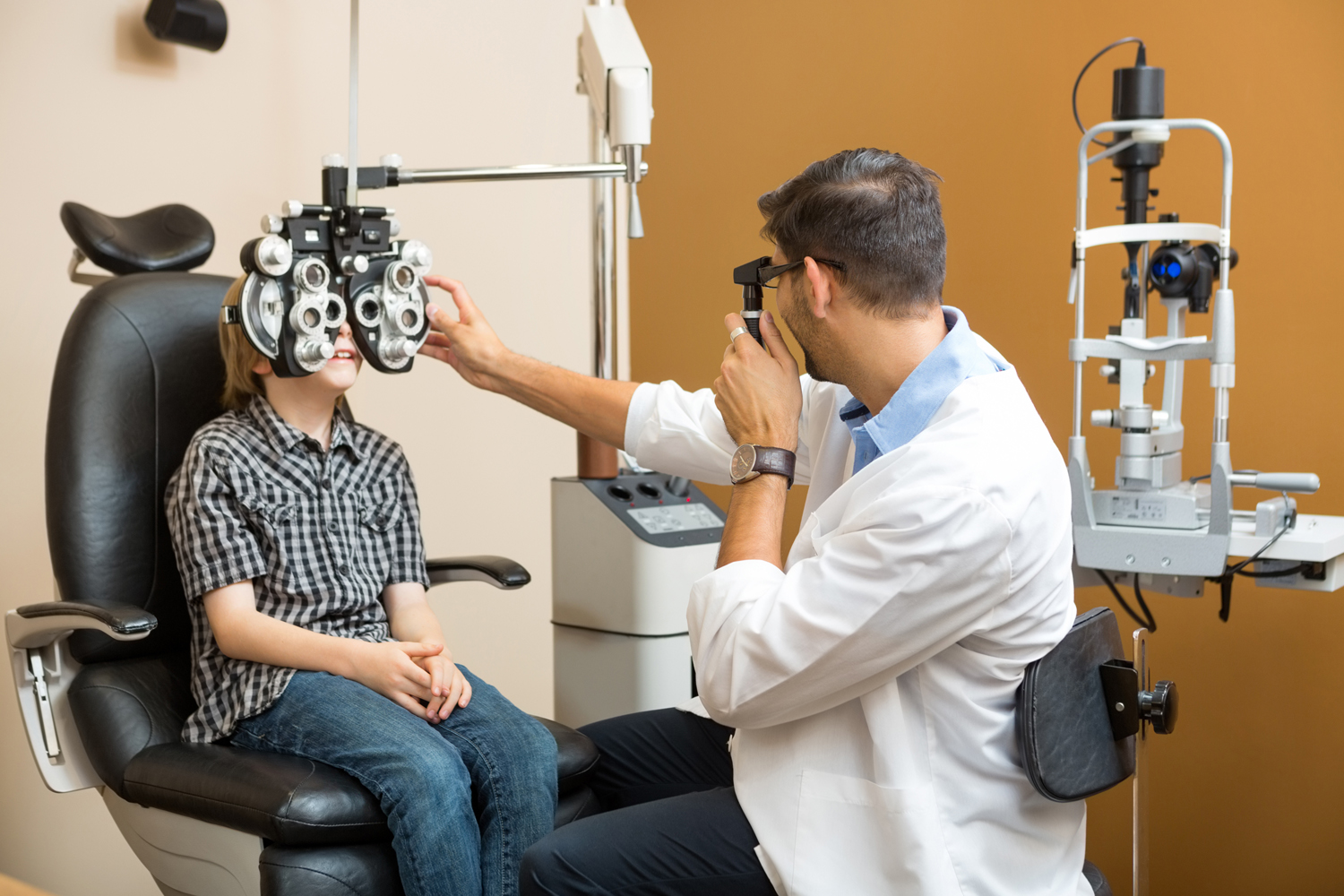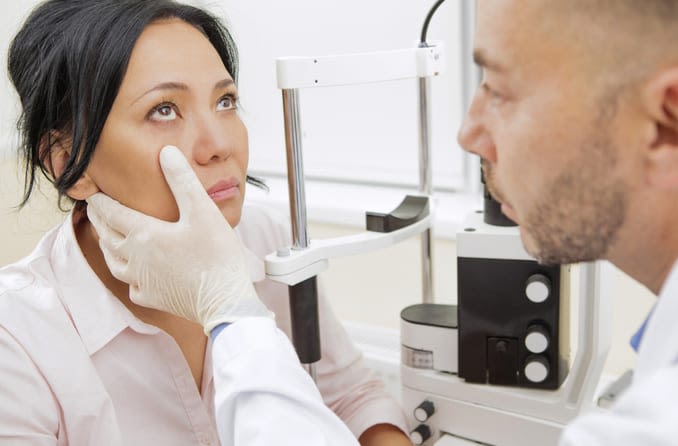Checking Out the most recent Technological Developments in Optometry and What They Mean for Eye Doctors
In the ever-evolving field of optometry, recent technical improvements are reshaping just how practitioners come close to eye care. From the precision of Optical Coherence Tomography to the nuanced insights used by AI-driven diagnostic tools, these advancements are setting brand-new criteria in client assessment and treatment. Teleoptometry is poised to redefine ease of access, making certain that knowledge goes beyond geographical restrictions. As these innovations permeate the technique, eye doctors are confronted with the difficulty of embracing these tools to boost patient results. Yet, the question remains: just how will these technical changes redefine the functions and duties within the profession?
Advancements in Diagnostic Tools
Advancing the field of optometry, innovations in diagnostic devices have revolutionized the means eye care specialists examine and diagnose visual problems and eye problems. The previous years has experienced considerable technical advancements, enabling even more thorough and accurate examinations. Optical Comprehensibility Tomography (OCT), as an example, gives high-resolution cross-sectional photos of the retina, permitting the early discovery of diseases such as glaucoma and age-related macular deterioration. This non-invasive imaging strategy has actually become crucial in contemporary optometric method.
Another secret innovation is the introduction of innovative corneal topography systems, which map the surface curvature of the cornea with precision. These tools are especially valuable for fitting contact lenses and diagnosing corneal disorders. Digital retinal imaging has changed traditional ophthalmoscopy, offering comprehensive, scenic views of the retina that assist in extensive aesthetic examinations.
The advancement of wavefront aberrometry has additionally been crucial, allowing the analysis of refractive errors with unmatched precision (Eye Doctor). This innovation aids in customizing restorative lenses and enhancing surgical results for refractive surgical treatments. Jointly, these analysis improvements equip optometrists to deliver premium client treatment, making sure very early intervention and tailored therapy techniques, inevitably enhancing aesthetic health outcomes
AI in Individual Management
Building on the structure of innovative analysis tools, the unification of artificial knowledge (AI) in person management represents a transformative leap for optometry. AI systems are progressively employed to boost performance, precision, and personalization in patient care.
Moreover, AI-driven systems assist in streamlined individual communications and management processes. Automated organizing, virtual examinations, and customized follow-up strategies not only enhance individual satisfaction but likewise optimize time monitoring for experts. These systems can triage people based on the necessity of their problems, making certain that those in essential need obtain prompt interest.
Additionally, AI enhances decision-making by giving optometrists with evidence-based recommendations and therapy pathways. By integrating information from digital wellness documents, AI devices provide insights that educate professional choices, decreasing the threat of mistakes and improving patient results. As AI continues to develop, its function in patient administration will likely expand, reshaping the landscape of optometric care.
Advances in Retinal Imaging
In the world of optometry, retinal imaging has actually seen remarkable technological innovations that are improving analysis capabilities and patient care. Developments such as Optical Coherence Tomography (OCT) and fundus photography have transformed how useful source eye doctors examine the retina and visualize. OCT, particularly, provides high-resolution, cross-sectional images of the retina, permitting for the comprehensive assessment of its layers. This ability is very useful for very early discovery and monitoring of conditions like glaucoma, diabetic retinopathy, and age-related macular degeneration.
Improved imaging modalities like OCT angiography are more refining diagnostic accuracy. Eye Doctor Optometrist. Such developments facilitate the recognition of minute retinal changes that could indicate disease development.
Moreover, innovations in man-made intelligence are increasing retinal imaging by making it possible for automatic evaluation of big datasets. These systems aid eye doctors in identifying patterns indicative of pathology, consequently improving diagnostic accuracy and efficiency. Collectively, these technologies are changing retinal imaging into a keystone of modern-day eye treatment, boosting outcomes and increasing therapeutic opportunities.
Teleoptometry's Expanding Function
Teleoptometry is significantly becoming an essential part of eye treatment, driven by improvements in digital communication and diagnostic devices. This more information is specifically valuable in underserved and rural areas where accessibility to specialized eye care is commonly limited.
The combination of expert system (AI) further enhances teleoptometry, enabling the evaluation of aesthetic data and aiding in the detection of eye problems such as glaucoma and diabetic retinopathy. AI-powered algorithms can quickly translate intricate imaging information, giving eye doctors with beneficial insights that bolster professional decision-making.
Furthermore, teleoptometry supports connection of care via smooth integration with electronic health and wellness records (EHRs), enabling optometrists to maintain comprehensive client histories. This ensures that people receive customized and regular treatment even when seeking advice from with various practitioners.
In spite of these benefits, challenges stay, consisting of ensuring data safety and taking care of individual assumptions. Teleoptometry stands for a significant stride in the direction of even more obtainable, reliable, and patient-centered eye treatment. As innovation progresses, its duty is positioned to increase even more.

Future Trends in Eye Care
A myriad of ingenious trends is established to reshape the future of eye treatment, driven by technical improvements and the progressing needs of people. One substantial trend is the assimilation of man-made knowledge (AI) in diagnostics, which assures to enhance the precision and efficiency of eye assessments. AI formulas can assess vast quantities of information from retinal pictures, possibly identifying problems like diabetic person retinopathy and glaucoma earlier than conventional methods.
Additionally, tailored medication is getting grip in optometry, with hereditary screening notifying customized therapy plans. This approach aims to optimize patient outcomes by tailoring treatments to specific genetic accounts. Wearable modern technology, such as clever call lenses, is additionally coming up, supplying real-time tracking of intraocular stress or sugar degrees, therefore giving constant insights right into ocular and systemic health and wellness.
The fostering of increased fact (AR) and online reality (VIRTUAL important site REALITY) in training and client education and learning is one more emerging trend. These technologies supply immersive experiences that can enhance understanding and abilities both for eye doctors and clients. As these trends develop, eye doctors should stay abreast of technological improvements to supply cutting-edge treatment, guaranteeing improved person outcomes and fulfillment in the dynamic landscape of eye care.
Final Thought

Collectively, these analysis innovations equip optometrists to provide exceptional client care, ensuring very early intervention and customized treatment techniques, inevitably enhancing aesthetic health outcomes.

As these technologies continue to develop, eye doctors have to adjust and incorporate them into method, eventually maximizing process performance and boosting the requirement of eye treatment delivered to patients.